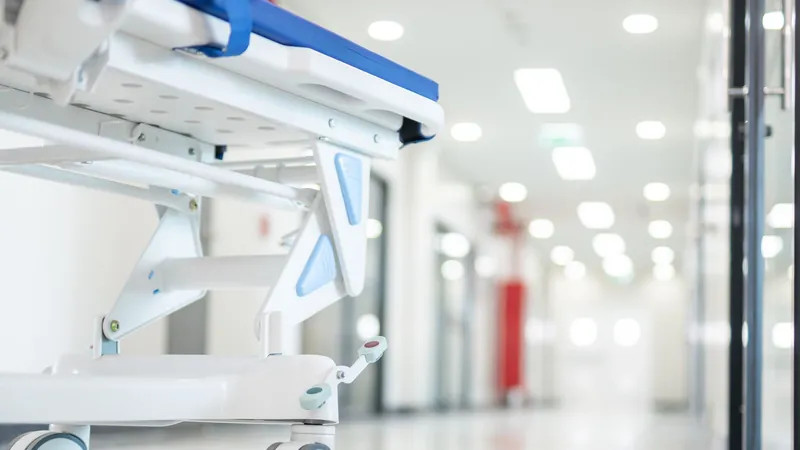
Revolutionary Breakthrough in Compact Particle Accelerators!
2025-09-15
Author: Noah
Unveiling a Game-Changing Diagnostic Technique
In a groundbreaking development, a dynamic international team has introduced a cutting-edge diagnostic technique for capturing ultra-short particle beams at the STFC's Central Laser Facility. Spearheaded by the University of Michigan in collaboration with Queen's University Belfast, this innovative research tackles a major hurdle in creating compact particle accelerators that could replace the sprawling kilometer-long facilities of today.
The Limitations of Current Accelerators
Traditional X-ray free-electron lasers (XFELs) are capable of generating laser-like X-rays, perfect for imaging at the viral scale. However, these remarkable machines require vast amounts of space and resources that most institutions simply can’t provide.
Compact Solutions: The Future of Particle Acceleration
Enter laser-wakefield acceleration technology—a cutting-edge approach that could condense such capabilities into lab-bench-sized devices! This technique involves unleashing a powerful, ultra-short laser pulse into plasma, which separates electrons from ions, creating an electric field that causes electrons to oscillate in wave patterns much like surfers riding waves.
Conquering Measurement Challenges
One of the biggest challenges researchers faced was the brief duration of the resulting particle beams, shorter than the time it takes for light to cross the width of a human hair. Conventional measurement methods simply couldn't keep up! The innovative team at STFC devised a novel approach: they use laser light to make minute deflections in particle paths.
A Breakthrough in Electron Measurement
By tracking these tiny deflections and analyzing laser field oscillations, scientists can pinpoint both the position and energy of individual electrons simultaneously. This dual measurement capability is crucial for deciphering and managing these ultra-short particle beams.
Opening Doors to New Research Opportunities
Professor Rajeev Pattathil, who leads the Novel Accelerators division at the STFC Central Laser Facility, highlights the revolutionary implications: 'Laser-driven plasma accelerators are evolving to the point where advanced light sources like XFELs can be designed with this technology in mind. Understanding the timing and energy of accelerated electron bunches is vital for progress.’
Towards a New Era of Accessibility in Research
Thanks to this innovative diagnostic tool utilizing the Gemini laser system, universities and research institutions previously unable to invest in large-scale facilities may now gain access to powerful X-ray sources. This compact technology could catalyze groundbreaking studies in structural biology, materials science, and medical imaging, ushering in a new era of scientific research.









 Brasil (PT)
Brasil (PT)
 Canada (EN)
Canada (EN)
 Chile (ES)
Chile (ES)
 Česko (CS)
Česko (CS)
 대한민국 (KO)
대한민국 (KO)
 España (ES)
España (ES)
 France (FR)
France (FR)
 Hong Kong (EN)
Hong Kong (EN)
 Italia (IT)
Italia (IT)
 日本 (JA)
日本 (JA)
 Magyarország (HU)
Magyarország (HU)
 Norge (NO)
Norge (NO)
 Polska (PL)
Polska (PL)
 Schweiz (DE)
Schweiz (DE)
 Singapore (EN)
Singapore (EN)
 Sverige (SV)
Sverige (SV)
 Suomi (FI)
Suomi (FI)
 Türkiye (TR)
Türkiye (TR)
 الإمارات العربية المتحدة (AR)
الإمارات العربية المتحدة (AR)